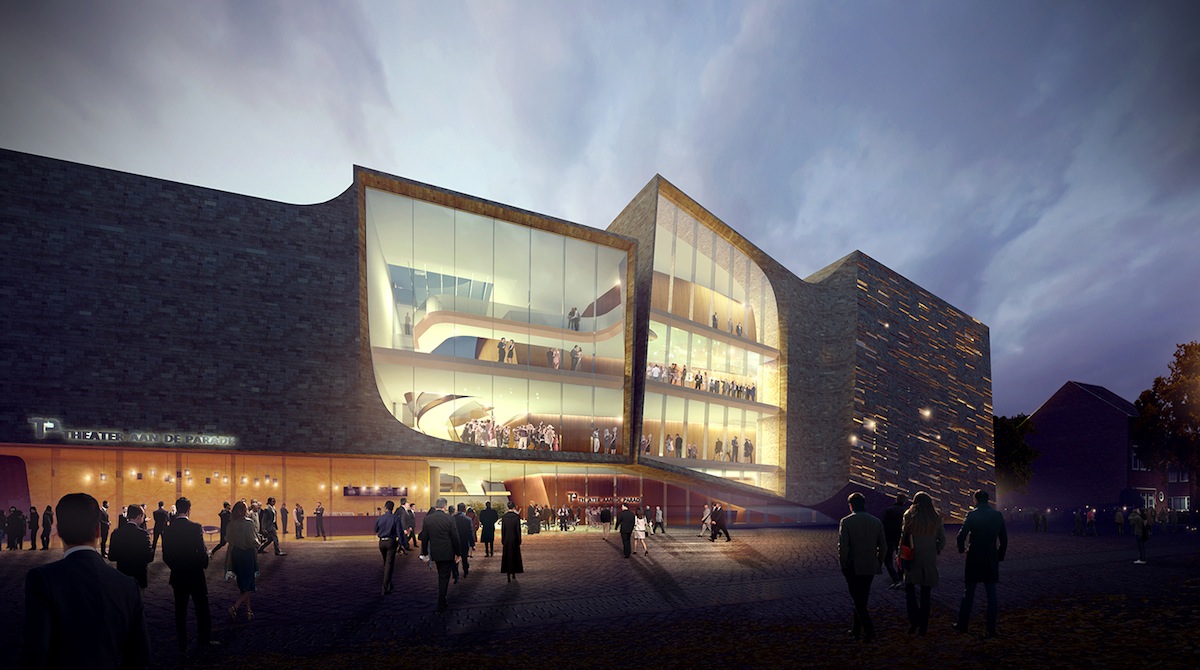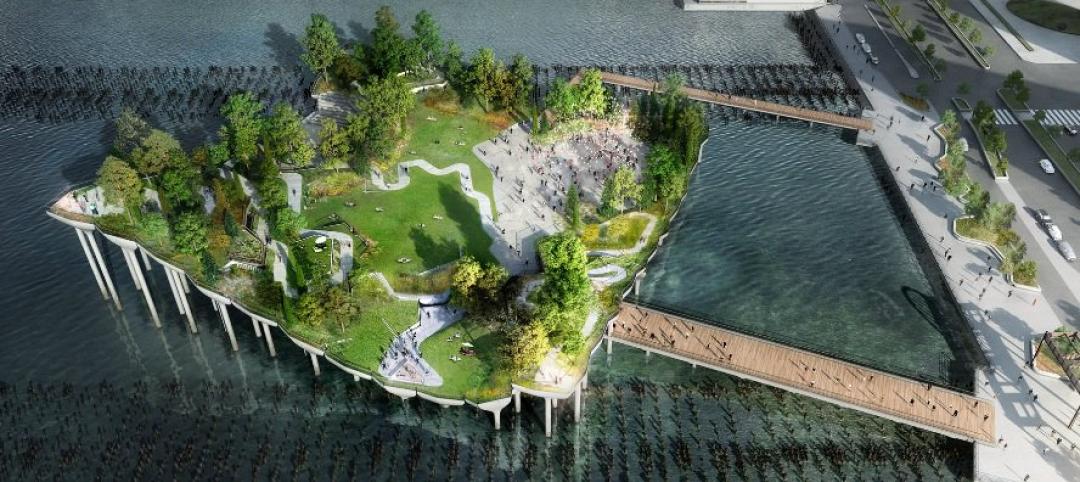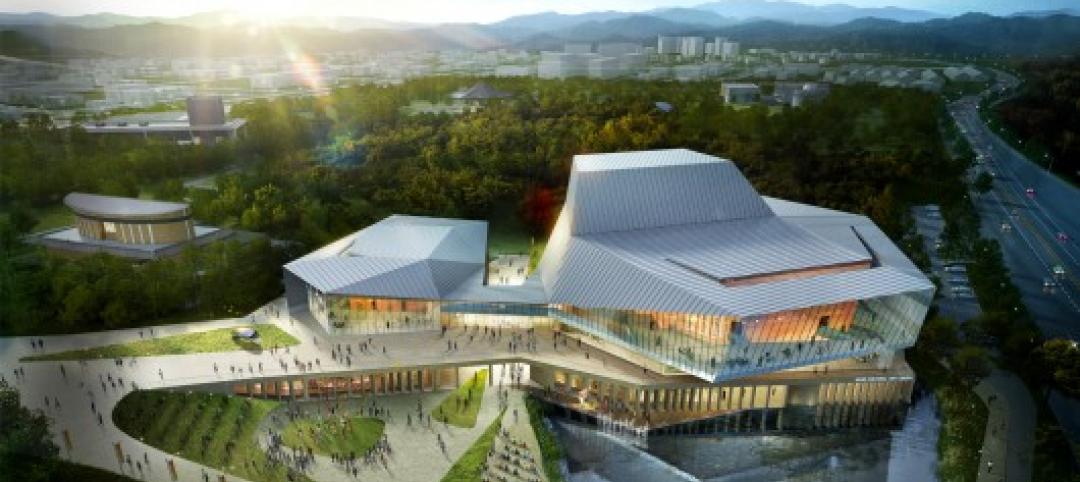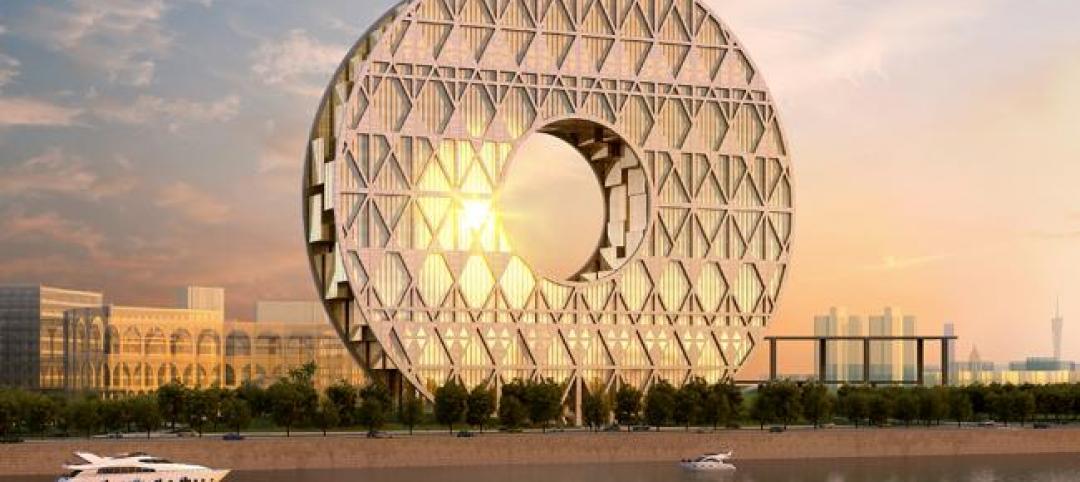Residents of ‘s-Hertogenbosch, a municipality in the southern Netherlands, voted in favor of Amsterdam-based UNStudio’s design proposal for a new theater that will replace an existing, 1970s-era theater in Den Bosch, the colloquial name of this 141,000-person city.
The design, called Theater on the Parade, received 57% of 2,681 votes cast online, beating out Rotterdam-based Ector Hoogstad Architects’ more classical, brick-structured proposal. (The city also surveyed 5,000 residents.) The public’s vote, which was open to all local residents over 12 years old and ran through June 7, counted toward 50% of the municipality’s final decision.
The two finalists had been selected by a panel of judges.
UNStudio’s design for the 10,731-sm (115,500-sf) building integrates the theater’s four separate but connected volumes into its adjacent surroundings, which include a public square and St. John’s Cathedral. ArchDaily reports that the theater’s two auditoriums will feature natural stone facades, while the four-level, 19-meter-high public foyers will be wrapped in glass so the entire building becomes a natural extension of the square. The larger auditorium will be sunken slightly so as not to obscure the sightlines of the cathedral.
“Ideas surrounding sensation and cultural expression form the conceptual basis of the design,” explained Ben van Berkel, Founder and Principal of UNStudio.
Construction is scheduled to begin in 2017, and the project is scheduled for completion by 2020. No cost estimates were released.
The larger auditorium will seat 950 and is designed with walls covered with wooden lamellas for enhanced acoustics. The smaller, 420-seat auditorium, called Paradezaal, will be a flexible space and retractable seating to accommodate different kinds of events.

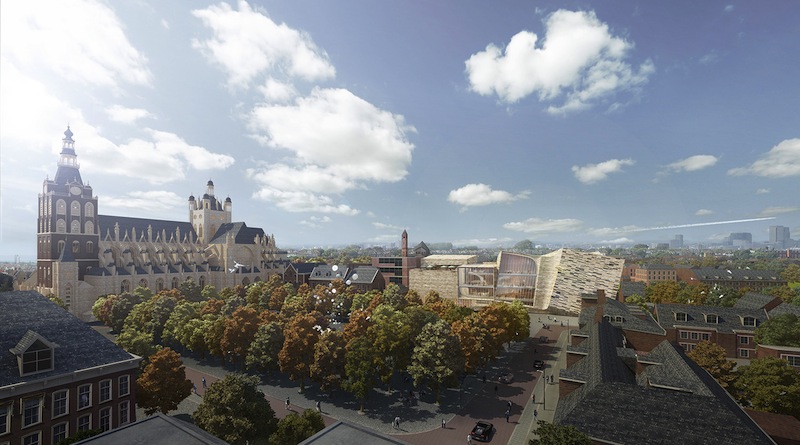
Related Stories
| Jan 2, 2015
Construction put in place enjoyed healthy gains in 2014
Construction consultant FMI foresees—with some caveats—continuing growth in the office, lodging, and manufacturing sectors. But funding uncertainties raise red flags in education and healthcare.
| Dec 28, 2014
AIA course: Enhancing interior comfort while improving overall building efficacy
Providing more comfortable conditions to building occupants has become a top priority in today’s interior designs. This course is worth 1.0 AIA LU/HSW.
| Nov 26, 2014
USITT Selects Bahrain National Theatre for Honor Award
The Bahrain National Theatre will be recognized with an Honor Award by the United States Institute for Theatre Technology (USITT) in 2015.
| Nov 18, 2014
Fan of the High Line? Check out NYC's next public park plan (hint: it floats)
Backed by billionaire Barry Diller, the $170 million "floating park" is planned for the Hudson River, and will contain wooded areas and three performance venues.
| Nov 17, 2014
'Folded facade' proposal wins cultural arts center competition in South Korea
The winning scheme by Seoul-based Designcamp Moonpark features a dramatic folded facade that takes visual cues from the landscape.
| Oct 23, 2014
China's 'weird' buildings: President Xi Jinping wants no more of them
During a literary symposium in Beijing, Chinese President Xi Jinping urged architects, authors, actors, and other artists to produce work with "artistic and moral value."
| Oct 20, 2014
UK's best new building: Everyman Theatre wins RIBA Stirling Prize 2014
The new Everyman Theatre in Liverpool by Haworth Tompkins has won the coveted RIBA Stirling Prize 2014 for the best building of the year. Now in its 19th year, the RIBA Stirling Prize is the UK’s most prestigious architecture prize.
| Oct 16, 2014
Perkins+Will white paper examines alternatives to flame retardant building materials
The white paper includes a list of 193 flame retardants, including 29 discovered in building and household products, 50 found in the indoor environment, and 33 in human blood, milk, and tissues.
| Oct 15, 2014
Harvard launches ‘design-centric’ center for green buildings and cities
The impetus behind Harvard's Center for Green Buildings and Cities is what the design school’s dean, Mohsen Mostafavi, describes as a “rapidly urbanizing global economy,” in which cities are building new structures “on a massive scale.”


